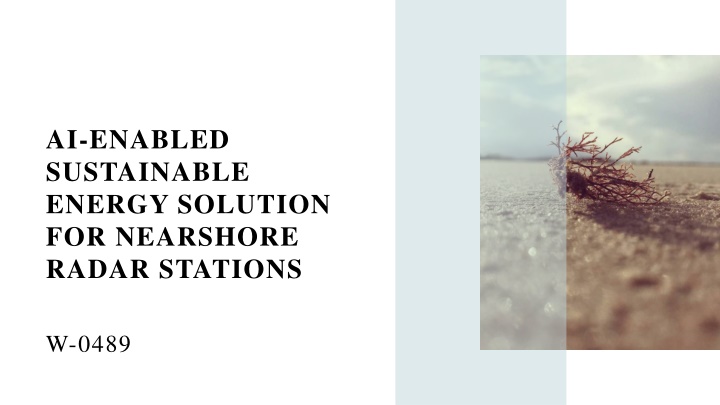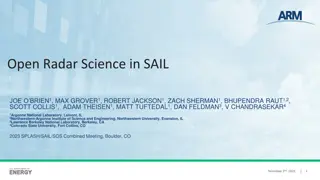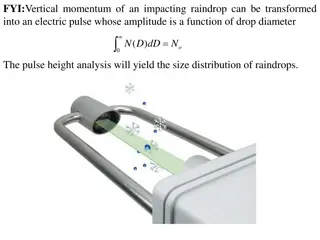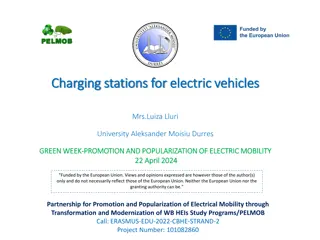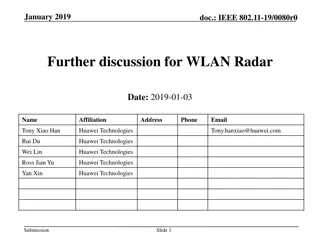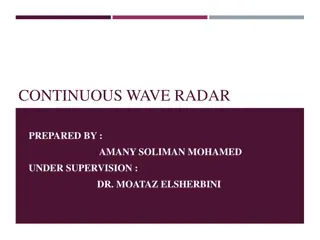AI-Enabled Sustainable Energy Solution for Nearshore Radar Stations
This innovative solution integrates floating tidal turbines and solar panels to provide continuous renewable power supply, reliable power distribution, real-time monitoring, predictive maintenance, and data-driven optimization. The design offers environmental benefits, reduced emissions, and enhanced efficiency for nearshore radar stations.
Download Presentation

Please find below an Image/Link to download the presentation.
The content on the website is provided AS IS for your information and personal use only. It may not be sold, licensed, or shared on other websites without obtaining consent from the author.If you encounter any issues during the download, it is possible that the publisher has removed the file from their server.
You are allowed to download the files provided on this website for personal or commercial use, subject to the condition that they are used lawfully. All files are the property of their respective owners.
The content on the website is provided AS IS for your information and personal use only. It may not be sold, licensed, or shared on other websites without obtaining consent from the author.
E N D
Presentation Transcript
AI-ENABLED SUSTAINABLE ENERGY SOLUTION FOR NEARSHORE RADAR STATIONS W-0489
SOLUTION FEATURE (I) Integration of Floating Tidal Turbines and Solar Panels for green power generation Adaptability to various nearshore environments through array design and mooring system 2
SOLUTION FEATURE (I-SUPP) Flowchart of mooring design 3
SOLUTION FEATURE (II) Real-time data collection and monitoring through micro and electric sensors Advanced data analytics for energy consumption patterns and resource allocation optimization Machine learning algorithms and AI prediction of tidal patterns and solar energy availability, fault detection and predictive maintenance 4
APPLICATION AND EXPECTED OUTCOME (I) 1. Continuous renewable power supply: Replace diesel fuel with tidal turbines and solar panels. AI optimizes operation, predictive maintenance prevents downtime, and energy management balances generation, storage, and consumption generation. 2. Reliable power distribution: Mini-grid with battery storage ensures uninterrupted supply. Monitor tidal/solar data, power usage, and supply with reliable software. Backup diesel for insufficient resources. Reduced emissions and maintenance. 3. Real-time monitoring and production, consumption, and storage. Predictive maintenance and smart energy management optimize performance and resource utilization. for efficient power maintenance: Monitor energy 5
APPLICATION AND EXPECTED OUTCOME (II) 4. Data-driven optimization: Analyze historical and real-time data for tidal turbine and solar panel optimization. AI fine-tunes settings for maximum energy capture. Data insights improve resource allocation and system efficiency. 5. Remote monitoring and control: Proactively identify issues. Real- time data collection and analytics optimize performance. Integration with existing infrastructure ensures seamless operation. AI-based systems optimize power distribution and prevent failures. Enhanced reliability, reduced maintenance costs, improved efficiency. 6
ADVANTAGE OF THE DESIGN (I) (a) Environmental benefits: Reduction in carbon emissions and reliance on fossil fuels. Conservation of marine ecosystems in nearshore locations. Contribution to the government s sustainability goals. 7
ADVANTAGE OF THE DESIGN (II) (b) Operational reliability and sustainability: Continuous power supply for radar stations, ensuring uninterrupted operations. Adaptability to varying weather environments. Minimal maintenance requirements and increased system lifespan. conditions and nearshore 8
ADVANTAGE OF THE DESIGN (III) (c) Site adaptability: Site selection based on performance data for tidal power generation. Mounting solar panels on suitable surfaces. Array design and mooring system to minimize device impact. 9
ADVANTAGE OF THE DESIGN (IV) (d) AI-driven optimization: Real-time optimization of power generation and distribution using AI algorithms. Accurate prediction of tidal patterns and solar energy availability for efficient resource utilization. Intelligent energy management system for optimal allocation of renewable energy sources. 10
ADVANTAGE OF THE DESIGN (V) (e) Cost efficiency: Long-term cost savings through reduced maintenance and optimized energy management. Maximization of renewable energy utilization reduces reliance on fossil fuels and lowers operational costs. Efficient resource allocation and optimization minimize wasted energy and improve sustainability. 11
TIMELINE SEP 2023 Project Commence MAR 2024 Prototype Development and Testing JUL 2024 Finalize Reporting and Evaluation Report NOV 2023 JUN 2024 System Design and Site Assessment Deployment and Optimization 12
THANK YOU THANK YOU 13
